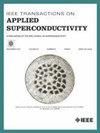Risk Assessment of EIC Central Detector (ePIC) Solenoid Magnet (MARCO)
IF 1.8
3区 物理与天体物理
Q3 ENGINEERING, ELECTRICAL & ELECTRONIC
引用次数: 0
Abstract
As part of the BNL-JLab-CEA Electron Ion Collider (EIC) collaboration, the design of a 2 T, 2.8 m bore diameter, 3.8 m long conduction cooled superconducting detector magnet design is completed. Such a magnet will be employed at the interaction region of ePIC for physics experiments. The magnet is a passive shielded solenoidal magnet system consisting of three coils wound with a specially designed conductor using niobium-titanium (NbTi) Rutherford-type cable in a copper-stabilized channel. This article describes the risk analysis as the part of failure modes and effects analysis (FMEA) that was carried out as a team to identify their various failure modes and risks associated with the magnet system. This FMEA is intended to become the content of the designed document as an integral part of the engineering assessment and the statement of work for the potential vendors toward design and built.EIC中央探测器(ePIC)电磁磁铁(MARCO)的风险评估
作为BNL-JLab-CEA电子离子对撞机(EIC)合作项目的一部分,完成了一个2 T,直径2.8 m,长3.8 m的传导冷却超导探测器磁体的设计。这种磁体将被应用于ePIC的相互作用区进行物理实验。该磁体是一种被动屏蔽电磁系统,由三个线圈组成,线圈采用特殊设计的导体,在铜稳定通道中使用铌钛(NbTi)卢瑟福型电缆。本文将风险分析描述为失效模式和影响分析(FMEA)的一部分,该分析是作为一个团队进行的,以确定与磁铁系统相关的各种失效模式和风险。本FMEA旨在成为设计文件的内容,作为工程评估和潜在供应商设计和建造工作说明的组成部分。
本文章由计算机程序翻译,如有差异,请以英文原文为准。
求助全文
约1分钟内获得全文
求助全文
来源期刊

IEEE Transactions on Applied Superconductivity
工程技术-工程:电子与电气
CiteScore
3.50
自引率
33.30%
发文量
650
审稿时长
2.3 months
期刊介绍:
IEEE Transactions on Applied Superconductivity (TAS) contains articles on the applications of superconductivity and other relevant technology. Electronic applications include analog and digital circuits employing thin films and active devices such as Josephson junctions. Large scale applications include magnets for power applications such as motors and generators, for magnetic resonance, for accelerators, and cable applications such as power transmission.
 求助内容:
求助内容: 应助结果提醒方式:
应助结果提醒方式:


